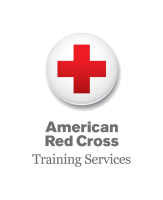-
CPR Songs for Chest Compressions
![An instructor keeping rhythm during CPR compression training.]()
Date Published: March 26, 2025
Performing cardiopulmonary resuscitation (CPR) correctly can mean the difference between life and death. One of the most critical aspects of CPR is maintaining the correct chest compression rate.
Whether you are a trained professional or a bystander, using music as a reference not only certifies proper CPR technique but also empowers you, increasing your confidence in the event of an emergency.
The Role of BPM in CPR
Beats per minute (BPM) is a measurement of tempo in music and helps determine whether a song is useful for CPR. Staying within the 100-120 BPM range is critical for delivering oxygenated blood to the brain and vital organs during cardiac arrest.
Choosing a song in this range helps prevent rescuers from performing compressions too fast or too slow. Several popular songs fall within 100-120 BPM, making them excellent tools for guiding chest compressions.
Best Songs for CPR (100 – 120 BPM)
The key to using songs for CPR is choosing one with a tempo within the recommended range to support the best resuscitation efforts.
Many songs have a BPM between 100 and 120, making them ideal for CPR. The most famous example is the Bee Gees' "Stayin’ Alive," which has a BPM of 103 — right in the recommended range.
Top CPR Songs to add to your CPR Playlist:
Song Artist Beats Per Minute (BPM) Dynamite BTS 114 Havana Camila Cabello ft. Young Thug 105 Break My Heart Dua Lipa 113 Dance the Night Dua Lipa 110 Levitating Dua Lipa 103 Cold Heart - PNAU Remix Elton John & Dua Lipa 116 Cupid - Twin Ver. Fifty Fifty 120 Sit Next to Me - Stereotypes Remix Foster the People 105 Last Night Lonely Jon Pardi 103 Love Yourself Justin Bieber 100 Sorry Justin Bieber 100 Can't Stop the Feeling! Justin Timberlake 113 Someone You Loved Lewis Capaldi 110 Uptown Funk Mark Ronson ft. Bruno Mars 115 Happier Marshmello & Bastille 100 One Thing Right - Koni Remix Marshmello & Kane Brown 105 Flowers Miley Cyrus 118 Stick Season Noah Kahan 118 Circles Post Malone 120 Calm Down Rema ft. Selena Gomez 107 Dancing with a Stranger Sam Smith & Normani 103 Señorita Shawn Mendes & Camila Cabello 117 Down Easy Showtek & MOTi ft. Starley & Wyclef Jean 103 Stay Zedd & Alessia Cara 102 The Middle Zedd, Maren Morris, & Grey 107 These songs act as a mental cue during CPR, confirming you’re providing consistent, high-quality chest compressions — crucial in maintaining proper blood circulation.
How Music Aids CPR Performance
Music can effectively reinforce proper CPR techniques because it helps individuals regulate their pace in high-stress situations, providing a reassuring, steady rhythm. When someone is in cardiac arrest, the responder might unintentionally speed up or slow down chest compressions due to stress or uncertainty.
A familiar song with the correct BPM can act as a built-in metronome to help keep compressions consistent and adequate.
Many bystanders hesitate to perform CPR or other life-saving measures due to fear of doing it incorrectly or freezing under pressure. Music can reduce hesitation in emergencies by providing a familiar and structured rhythm. This familiarity builds confidence and reduces uncertainty.
How to Use Music for CPR Training
Integrating music into training is beneficial whether you’re learning CPR or refreshing your skills.
- Create a CPR Playlist: Having a playlist of CPR-friendly songs is a helpful refresher.
- Mentally Recall a Song in Emergencies: If you ever need to perform CPR, thinking of one of these songs will keep your compressions on track.
- Take a CPR Class: Many CPR training courses incorporate music to reinforce the importance of maintaining the proper tempo.
Benefits of CPR Training
Music is an excellent CPR resource, but it does not replace the importance of formal CPR training. CPR training provides hands-on experience, preparing you to maintain the proper rhythm while applying the correct pressure and technique. Training also builds confidence — allowing you to act quickly in an emergency rather than hesitate.
Additionally, CPR training can also cover using an automated external defibrillator (AED), a crucial tool in cardiac arrest situations, and teaches the differences in CPR on adults, children and infants. By learning these skills, you’ll increase emergency preparedness — assessing emergencies, calling for help and providing life-saving aid until professional medical assistance arrives.
What to Read Next
Every second counts in a sudden cardiac arrest (SCA) and it’s critical to know what to do.Read our 7 potentially life-threatening scenarios and the basic skills you can learn to help save a life.Read 5 ways to help those in need from the American Red Cross.Take a Course and Refresh Your CPR Skills
About Red Cross Training Services
Training Services is a division of the American Red Cross. Our mission is to advance lifesaving education so you are better to prepared. Our robust training curriculum includes CPR and AED, First Aid, Basic Life Support (BLS), Babysitting and Child Care, Lifeguarding, Water Safety and more.


